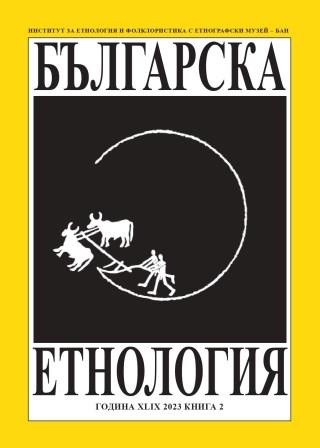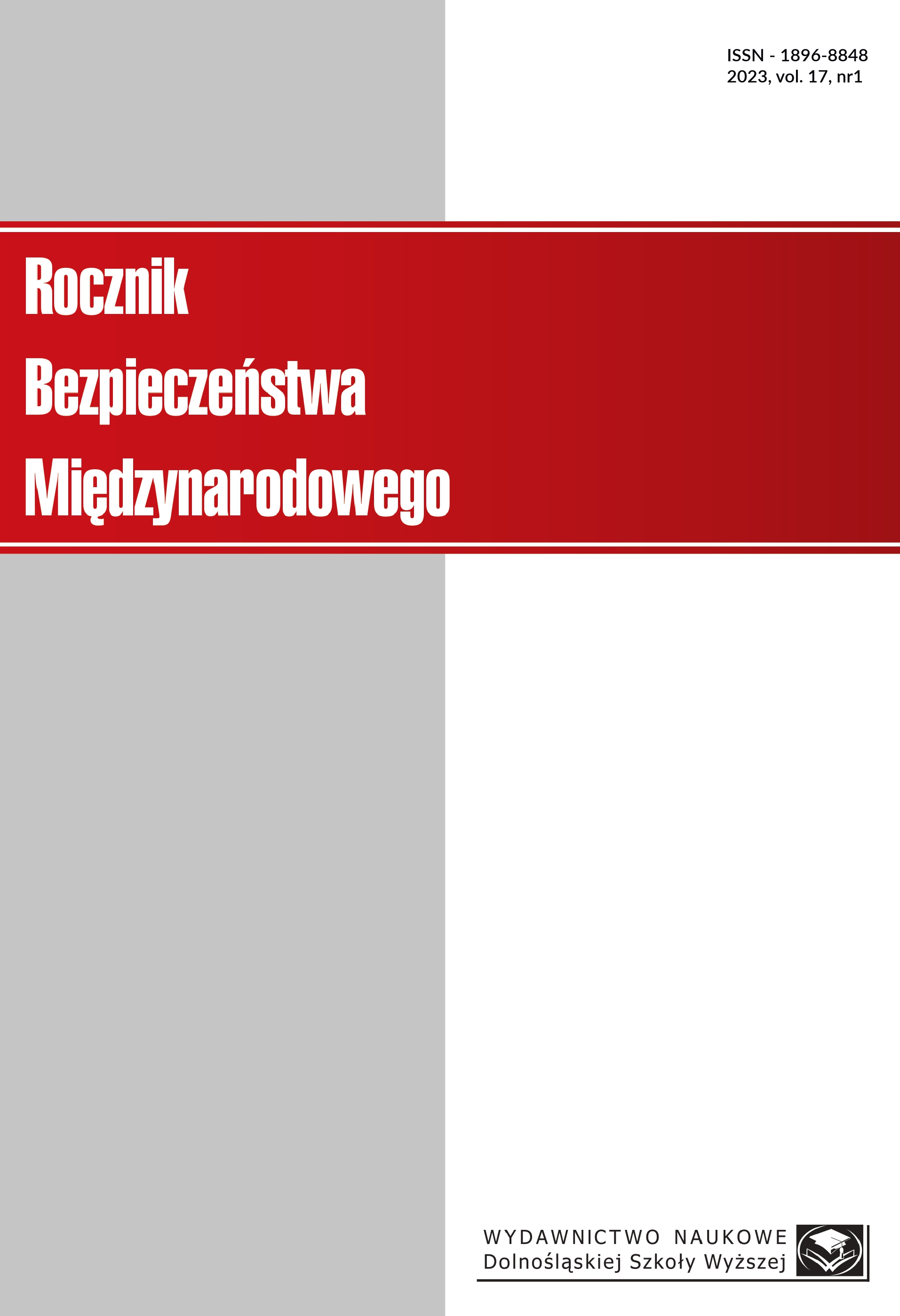
We kindly inform you that, as long as the subject affiliation of our 300.000+ articles is in progress, you might get unsufficient or no results on your third level or second level search. In this case, please broaden your search criteria.

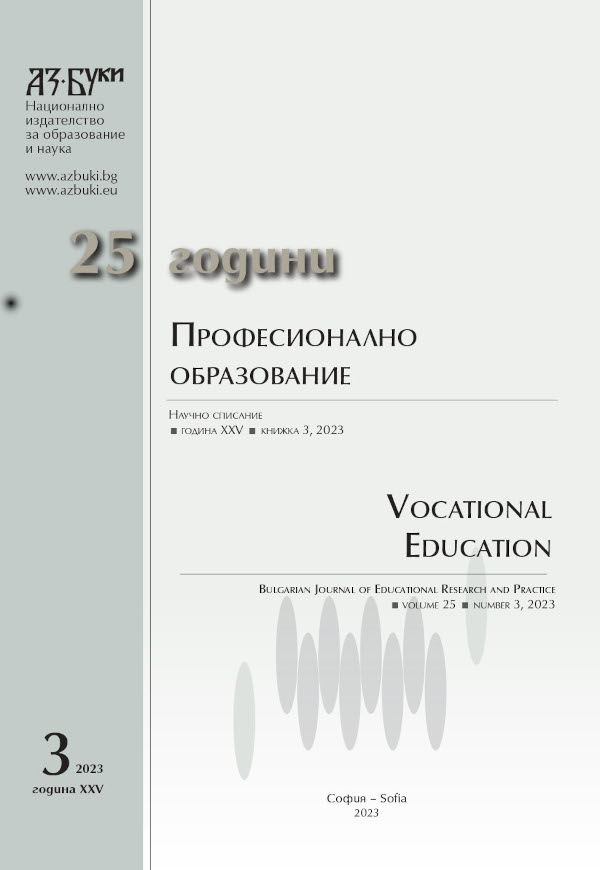
The crisis in political speech in our country (2022 – 2023) was strongly influenced by the military conflict in Ukraine that officially began on February 26, 2022. The war, which has shaken politics at the international level, has exposed the thick red lines between political entities in Bulgaria, deepening the parliamentary crisis that has reached a state of collapse in the past year and a half. And the media – intentionally or not, became a witness and accomplice to what was happening. The relevance of the chosen topic is dictated by the need to analyze the political speech regarding the military conflict in Ukraine during the election campaign for the fifth consecutive early parliamentary elections in Bulgaria (April 2, 2023). In the analysis, the author refers to the messages from the political formations and the position they take on the war, as well as their media coverage. The positions of media experts are presented. Sociological surveys were also examined, which show the attitude of the voters on the question. The goals of the development are to make an attempt to analyze the behavior of the main political subjects in our country regarding the war in Ukraine, the position they take, as well as the messages they send to the voters; to examine the results of each party’s strategy and how far it was able to influence the election result; to offer a prediction about the future development of the parties (possible and impossible partners) in the perspective of their political speech related to the military conflict. The pre-election campaign for the 49th Ordinary National Assembly was marked by the theme of the war in Ukraine and made it necessary for political subjects to clearly define their position on the conflict both to the voters and to their competitors, but also to future potential partners in the attempt to form a cabinet. In the current uncertain domestic political and international situation, the Bulgarian voter demonstrates the need for clearly stated and categorical positions in which to recognize his convictions.
More...
What is the role of artificial intelligence (AI) in healthcare public relations? How is it reshaping the world of health PR? Is AI a threat to healthcare PR or becoming their indispensable assistant? The purpose of the scientific report is to answer these and other questions regarding the application of artificial intelligence in health public communications. The methods used for the purpose of this report are the analysis and synthesis of data from bibliographic sources, as well as the analysis of the results of conducting a scientific experiment in a digital environment with artificial intelligence of the latest generation. Results. The role of AI in health PR is increasingly tangible and fully imposed in the system of international health care – the chatbot of the WHO in the Viber communication platform is a universal bridge between the Organization and its audiences and provides multi-layered opportunities for awareness on all possible health issues. An identical result is also on Facebook‘s Messenger platform. AI is gradually changing the business environment in every field, including healthcare. AI in the face of ChatGPT is becoming both an assistant to health PRs and a major rival. Discussion. Recent breakthroughs in AI technologies could significantly and permanently transform health PR and how it is implemented. The PR profession is not a disappearing species, as it is associated with a deep thought process, creativity, contacts, and connections with „living” people. These activities are so far beyond the reach of artificial intelligence, yet the best professionals will stand out and remain. The results of the scientific experiment set a direction for striving for anincreasingly accurate representation of health PR specialists in their professional field. Conclusion. ChatGPT can compose relevant texts, slogans, even messages that are highly effective when applied in the practice of health PR. In the foreseeable future, this technological innovation will be further refined. Chatbots as part of the idea of communication through AI is an area where the role of PRs is to carefully consider each message and the logical connection between the messages. The following recommendations emerge for future research on the topic: to monitor the technological progress of AI and to find new niches in health PR activities in which AI finds application.
More...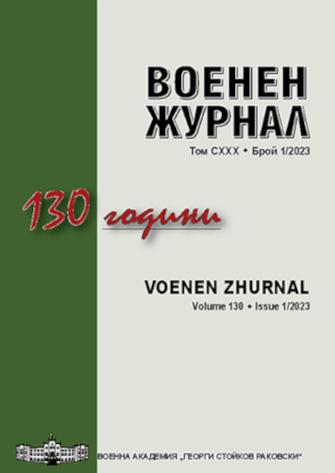
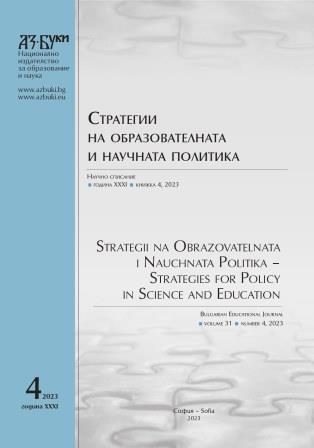
The COVID-19 virus outbreak has affected all aspects of human life. The challenges of education during the pandemic could have an impact on coping with stress. The aim of the current study was to explore the effects of people’s resilience to stress on burnout symptoms. We used The Maslach Burnout Inventory (Maslach, 1982), while the capacity to cope with stress and recover was measured with the Connor-Davidson Resilience Scale (2003). There were 375 participants, 235 women and 140 men, between the ages of 18 and 48 years old (M = 21.43; SD = 3.93), learning in higher education institutions. We performed several regression analyses using a stepwise method. Adaptability (β = -.38, p < .01), external control (β = .23,p < .01), seeking social support (β = -.26, p < .01), and decisiveness (β = .17, p < .01) were found to be significant predictors of emotional exhaustion (R2adj = .175). When it comes to personal accomplishments significant predictors were purposefulness(β = .29, p < .01), decisiveness (β = .19, p < .01), and adaptability (β = .13, p < .01) (R2adj = .304). Social support (β = -.36, p = .00), external control (β = .24, p < .01) and purposefulness (β = -.18, p < .01) were significant predictors of depersonalization (R2adj = .186). The findings from the present study show that high levels of resilience to stress have a protective effect on the manifestations of burnout symptoms. These results have implications for proposing theoretical foundations for burnout prevention strategies in an online learning context. Also, enrich intervention techniques connected with achieving higher adaptability.
More...
The article examines the problems of an integrated approach to the development of academic mobility in the system of training a special education teacher. The results of an experimental study are presented, which made it possible to find out the real state of readiness of future special teachers for academic mobility; to identify problems that have an inhibitory effect on this process. In general, they indicate the dominance of the student’s object position in the system of his professional development, so academic mobility is not perceived by them as an effective means of developing professional competence. This is confirmed by the results of a survey on the range of indicators of existing experience in academic mobility, the attitude to it as a factor of the quality of professional development and the presence of barriers that complicate it. The prospects of providing a systematic approach to the development of academic mobility of students are determined, within which it is necessary: on the one hand – to design the development of the student’s subject position in the system of his professional development on the basis of an individual educational trajectory, on the other – to develop gradually the possibilities of academic mobility based on increasing the active position of the student himself.
More...
The article examines the ways in which sustainable tourism is implemented in education. The need for this incorporation is identified and essential components through which it can be realized in tourism education are outlined. The object of the study is higher education in tourism, and its subject is the implementation of knowledge, skills and competences in students for the sustainable development of the sector. The main thesis of the author is that implementing the goals of sustainable development in tourism education and building a new way of thinking has an impact on the future abilities of professionals in the sector to achieve its long-term viability. On the basis of exploration of existing literature, as well as on the basis of own scientific and teaching experience, a conceptual model for education towards sustainable tourism development has been built and proposed. As an additional result of the research, good international practices and opportunities for education in the direction of sustainable tourism are presented.
More...
The article reflects the results of research among practical education specialists who teach the students of the “Social Pedagogy” specialty of the University of Sofia and the teachers who are responsible for the organization of the practical training. The research was carried out through a focus group and a survey and aims to establish the good practices and challenges in organizing and conducting the practical training of the students during the COVID restrictions. The analysis of the results allows us to outline guidelines for improving the quality of the training in the conditions of unforeseen changes and crisis situations to satisfy the need for qualified and motivated specialists in the field of social pedagogy.
More...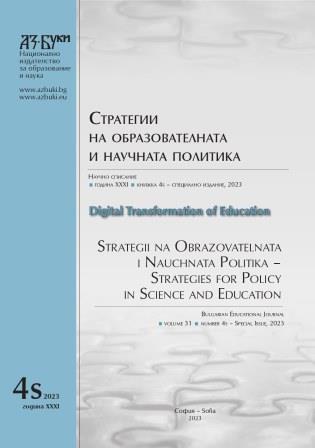
The technological advancements in the last three decades have led to many innovations in the area of the Information and Communication Technologies, which in turn have fuelled the rapid development of the modern 3D technologies. This collective term is used to describe both the methods for the development of the digital content and the solutions and devices, which provide means for the attractive, interactive and innovative visualisation and popularisation of this content. The 3D technologies have provided many possibilities and never-before-seen opportunities, but they have also presented many new challenges. The high cost of the equipment, the complexity of the digitalization processes and the unexperienced staff are just few of the reasons for the slow adoption rate and the delayed integration and use of these technologies by the higher educational institutions. Currently, there are many different ICT solutions and systems in use in the colleges and universities in Europe and in the world. Nevertheless, only few of them are related to or use the modern 3D technologies. In this article we present and analyse some of the most popular methods and approaches for development of digital models, as well as how this content can be visualised, presented and popularised using different platforms and solutions. Last, but not least, we discuss the possibilities to integrate the modern 3D technologies in the scientific activities of the higher education institutions in Bulgaria.
More...
Whenever it comes to evaluation and accreditation, what most excites the academic community is how far the criteria system applied by the National Agency for Evaluation and Accreditation can accurately and impartially “capture” the quality of education in higher education institutions in Bulgaria. Often the differences in estimates are of the order of hundredths after the decimal point, but they have a significant differentiating meaning. The paper analyzes the criteria system of NEAA, emphasizing the possibilities for scaling and calibration of the indicators included in it. The main thesis is that the objectivity of the assessment, apart from the number of indicators, also depends on the precision and transparency of their sizing. In theoretical terms, the “reading” of the NEAA criteria system is based on the theory of measurement and the theory of fuzzy sets. In conclusion, the main findings of the criteria system are summarized and some recommendations for its improvement are given.
More...
After an overview of the scientific literature, scientifically proven inner university mechanisms, aiming to increase the quality of distance learning in accordance with our country’s regulations have been proposed, with the emphasis of this report being the model for evaluating e-courses for distance learning by experts (according to specially developed rules).One of the model’s key benefits is that it actually leads to increased e-course quality when distance learning is concerned. With this system every teacher, whose course is subject to evaluation, is provided with the support that is needed and has a personal contribution in helping distance learning meet country requirements. A disadvantage of the model is the need for precise verification and approval of the course by experts, which requires time and effort. Ways to resolve this problem were investigated.
More...
The development of educational technologies in the 21st century allowed saturation with technological resources that dynamizes and digitizes the learning process. This new trend was logically supported with appropriate hardware and software. In the conditions of the Covid-19 pandemic, it was digital communication channels and virtual learning environments that ensured the continuity of the national education system. In higher education, the decades-old academic distance learning centres have provided the learning process for full-time and part-time students and proven their effectiveness. In parallel with the financial provision in school education for the construction of STEM classrooms, a professional standard for an environment, nurturing development was achieved. Both teachers and students in science, technology, engineering, and mathematics became the main beneficiaries. In contrast, in the system of higher education, delays and lagging are found, as often graduates coming from STEM classrooms end up in university classrooms which are decades behind in technological advancement. This paper therefore advocates the introduction of the tentatively named BEST standard, based on Business, Entrepreneurship, Science and Technology, in higher education as a logical build-up to the good STEM outcomes established in school settings.
More...
Young people are the future of society and agents for social change. That is why it is so crucial to provide education that not only equips them with knowledge and skills but also changes their attitudes and behaviour towards sustainable development.
More...
As social networks have evolved beyond their original purpose, and have proven to be a successful platform even for business and politics, it was only natural for the educational process to find its place in this virtual realm. As early as 2019, Facebook introduced the Social Learning mode, which provided excellent opportunities for publishing and structuring educational content within closed groups, taking the utilization of this social network to a new level in the learning process. It can hardly be disputed that social networks have the potential to offer rich access to a variety of educational resources, but recently, there has been a persistent migration of students from the digital generation to platforms such as Instagram, TikTok, Pinterest, where digital content in the form of small portions of visual and video information circulates. This trend leads to the need for a fresh interpretation of the concept of micro-learning and micro-content in the context of social networks, as well as the need to explore learners' attitudes towards such type of learning.
More...
The COVID-19 pandemic has led to a complete reorganization of the educational process and its transformation into a digital form in all countries affected by the crisis. But all too often, school institutions fail to organize and implement high-quality digital learning. This situation reveals as a magnifying glass the deficit in the processes of digitization of education. Students, teachers and parents are faced with a number of challenges, realizing the importance of reliable infrastructure, well-thought-out digital concepts for teaching online and having the necessary competencies, both by teachers and students. The main step in developing appropriate educational approaches in the field of digitization of education is to evaluate the experience of this time and draw lessons to make society more sustainable in the future.
More...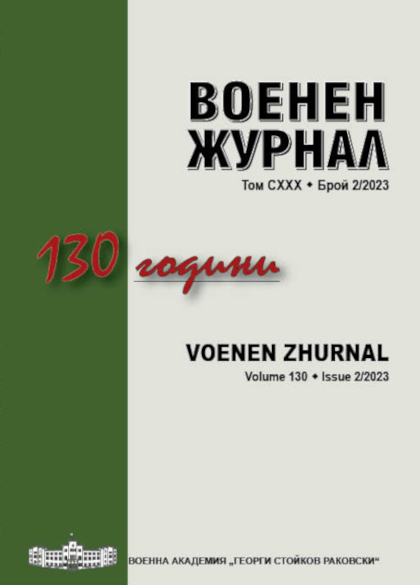
The report presents the technical and methodological use of artificial intelligence in disaster hazards by defining the critical issue in disaster management. The applications of artificial intelligence such as tracking and mapping, geospatial analysis, remote sensing techniques, robotics, drone technology, machine learning, telecommunications and network services, accident and hotspot analysis, smart urban planning, transportation planning and impact analysis on the environment, are the technological components of societal change that have significant implications for the scientific study of societal response to hazards and disasters. Used are different technologies and methods to study hazards and disasters through disciplinary, multidisciplinary and interdisciplinary lenses, quantitative and qualitative data collection and data analysis strategies.
More...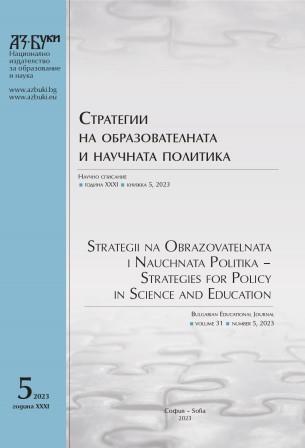
The article presents the results of a longitudinal study aiming to investigate the effects of the type of educational system on the personality of Bulgarian students in the period of late adolescence. Using the adapted Bulgarian versions of three self-assessment tests: the Heubeck и Neill psychological well - being scale, the Rosenberg self-esteem scale, and the the Eysenck mental states test, two groups of 32 adolescent students each, were examined at the beginning, at the middle of the second year and at the end of the third year of their education at two different vocational schools applying different educational systems: the German dual educational system, and the Bulgarian traditional vocational educational system, respectively. The results showed statistically significant between-group differences in the mean group scores on the studied personality characteristics. The results were analysed in the context of the impact of schooling on the personality development of young.
More...
Niche tourism in Bulgaria is facing a shortage of specialised staff. The quality of services in the Recreational industry depends on the integration of scientific findings into Wellness & Spa therapies. This study summarises the specifics of the newly accredited Wellness & Spa programs at the National Sports Academy “V. Levski”. The innovations are financially supported by the Bulgarian Heritage BG Centre of Excellence. Under the priority axis 1 “Research and Technological Development”, a scientific bridge was established to implement the European policy “healthy lifestyle for everyone”. Through the education of specialised personnel, our team gained insights on how Bulgarian Niche tourism can improve the quality of services in the Wellness & Spa sector. By identifying the specific professional competencies, the scientific team at NSA “V. Levski” developed innovative educational programs for new jobs to meet the needs of the Niche tourism business. The analysis of the development of professional knowledge and skills led to improved higher quality services and interdisciplinary education. By accrediting new scientific and educational programs in two professional fields, health care and sports, NSA “V. Levski” has become an educational and scientific leader at the National, Balkan, and European level in the field of Niche tourism, specifically in the Wellness & Spa sector.
More...
The article is aimed at the modern development of the tourist activity and the possibility of innovation of a number of factors seeking to improve the quality of the tourist product. The aspiration of the modern tourist is to create social contacts, actively aiming to get to know natural attractions as well as searching for an ecological, natural and healthy way of life. The emphasis is on analysis and detailing of the factor operations in tourism and above all on their practical application side in the various organizations that are targeting the new category – Wellness tourist. The trends in the tourism industry are towards restoring the confidence of tourists and increasing travel from 2020 levels. where it falls below 70%. The World Tourism Organization (UNWTO) treats levels where up to 2.5 years or 4 years travel can be recovered. The multitude of surveys and measurements are to increase competitiveness based on research and updating of the tourist product. The aim of the dynamics is aimed at the quality of the tourist product, its energy intensity and the level of tourist service related to its efficiency. It is also a question of a rational economic advantage related to the costs and, respectively, the price, as well as an axiological advantage related to the value (that is, the quality) of the tourist product and its competitive advantage (Ribov 2018).
More...